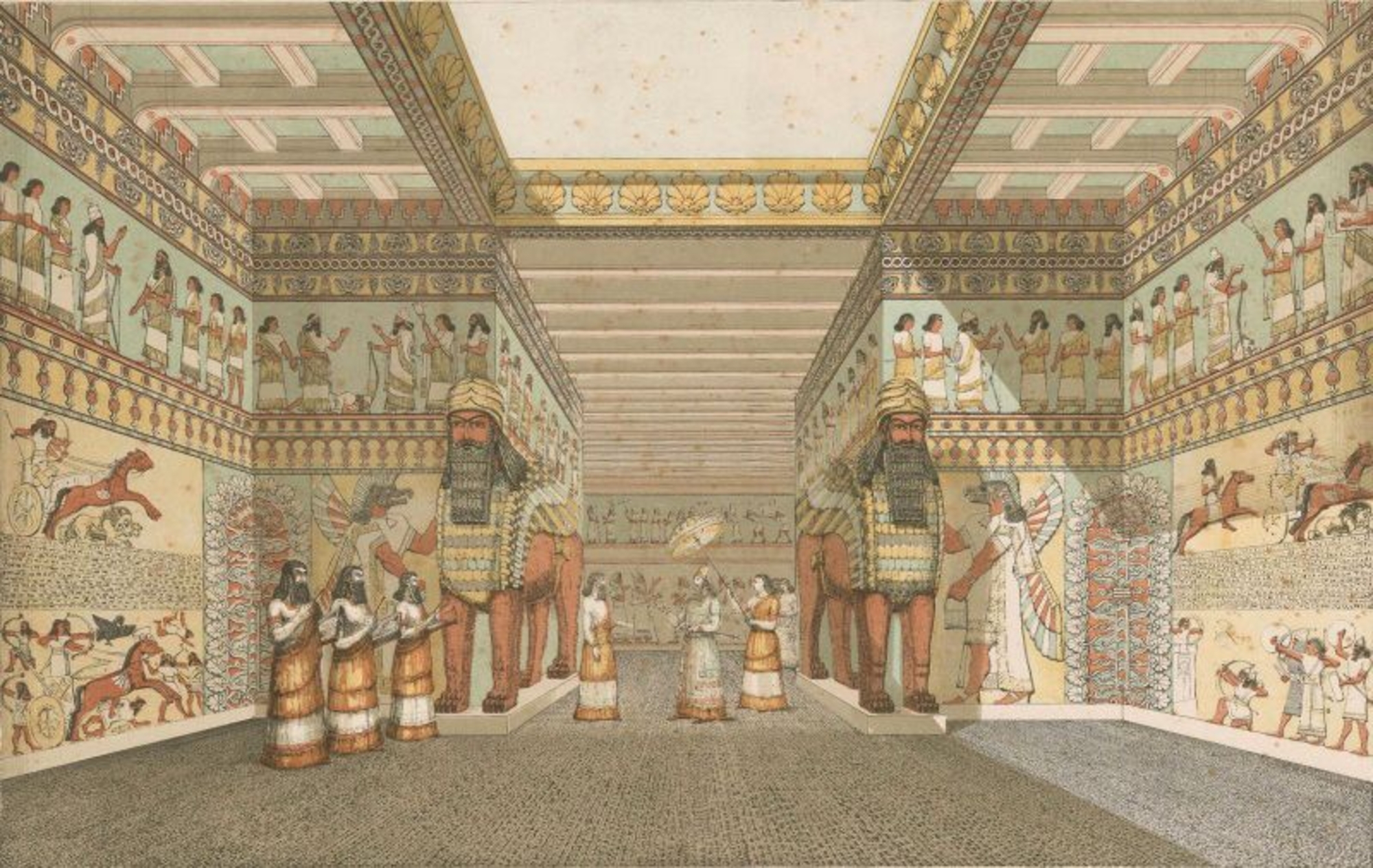- Home
- The luxury of an Assyrian palace
- A world in miniature
Artificial landscapes
Every Mesopotamian palace in the 1st millennium BCE had gardens and the park of Sargon's palace in Khorsabad was worthy of his splendid capital. It was a small-scale reproduction of a forested and mountainous landscape, crisscrossed by rivers, similar to the Amanus mountains in southeast Anatolia.
"I made a great park, like the Amanus, and had it planted with all kinds of aromatic and fragrant plants from Syria, and fruit trees from the mountains”
(Sargon II, inscription from Dur-Sharrukin)
Pleasure pavilions
A relief in Room VII suggests the garden included small pleasure pavilions or kiosks. A building with columns decorated with merlons which could be the palace bit hilani (Monument X) overlooks a fish-filled body of water with boats, surrounded by fruit trees and conifers. Next to it, a crenellated tower with a facade featuring steps, perhaps an altar, stands on a wooded hill with birds. The same garden pavilions are depicted in reliefs from Nineveh.
A borrowed tradition
The tradition of Assyrian royal parks was borrowed by other peoples in the Near East. The most famous are the legendary hanging gardens of Babylon, one of the seven wonders of the ancient world. Their sophisticated irrigation system was already used by the Assyrians. Under the Persians, the paradeisos was a palace park with trees and animals, just like in Khorsabad. This term gave rise to the word “paradise", which refers to the garden of Eden in the Bible.
Find out more:
- ”Oriental Gardens" exhibition at the Institut du Monde Arabe (19 April-25 September 2016).

